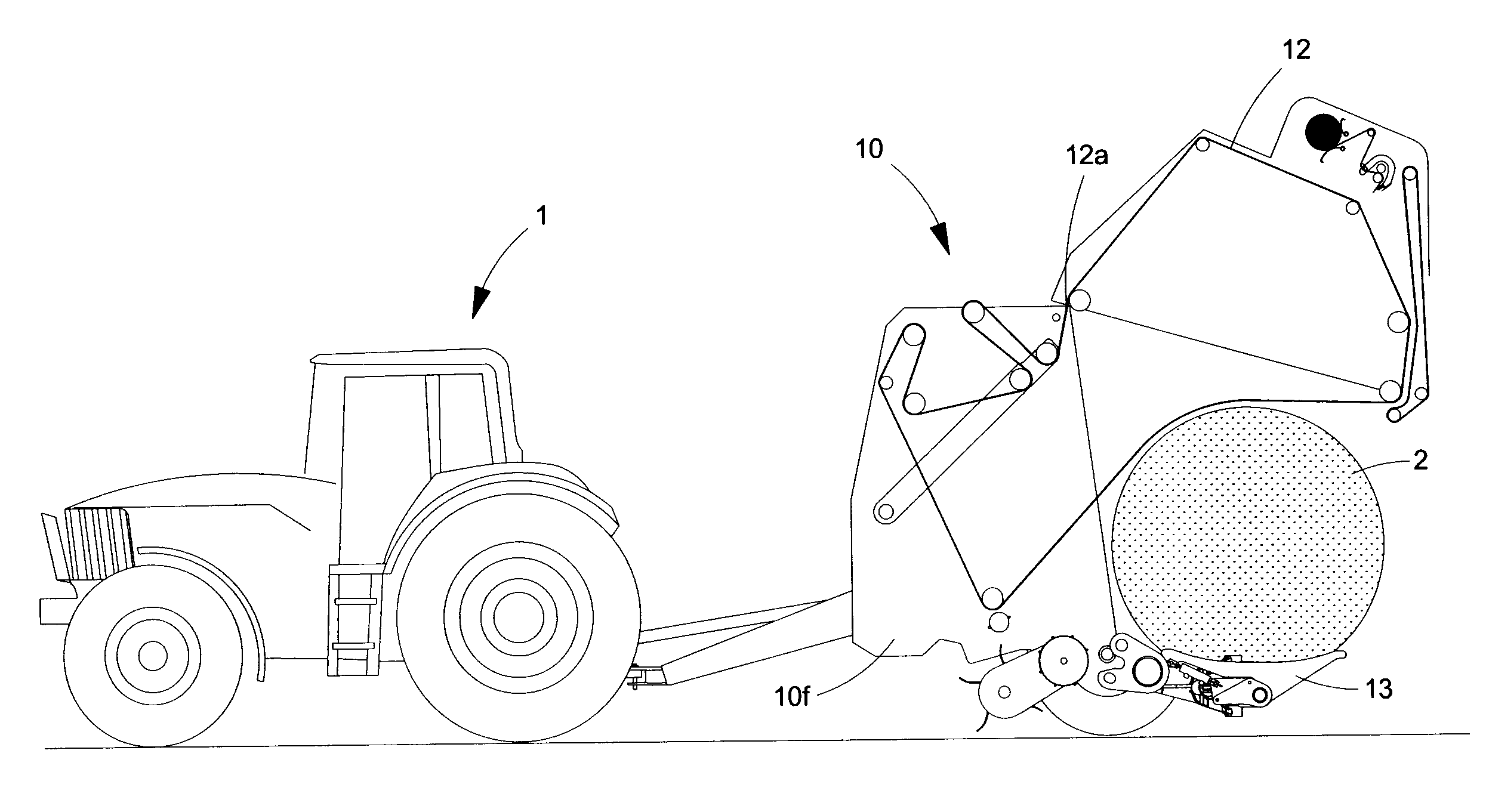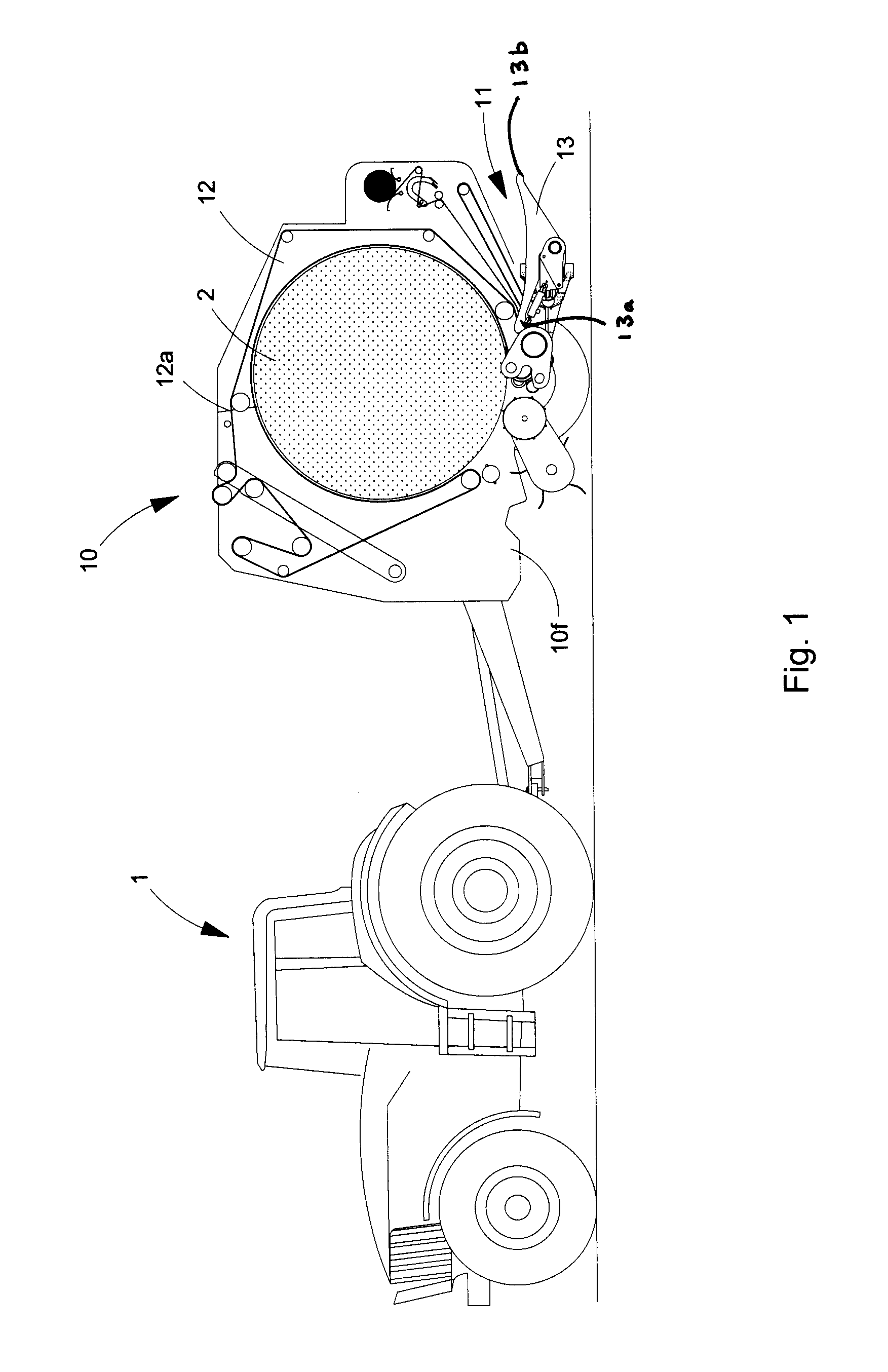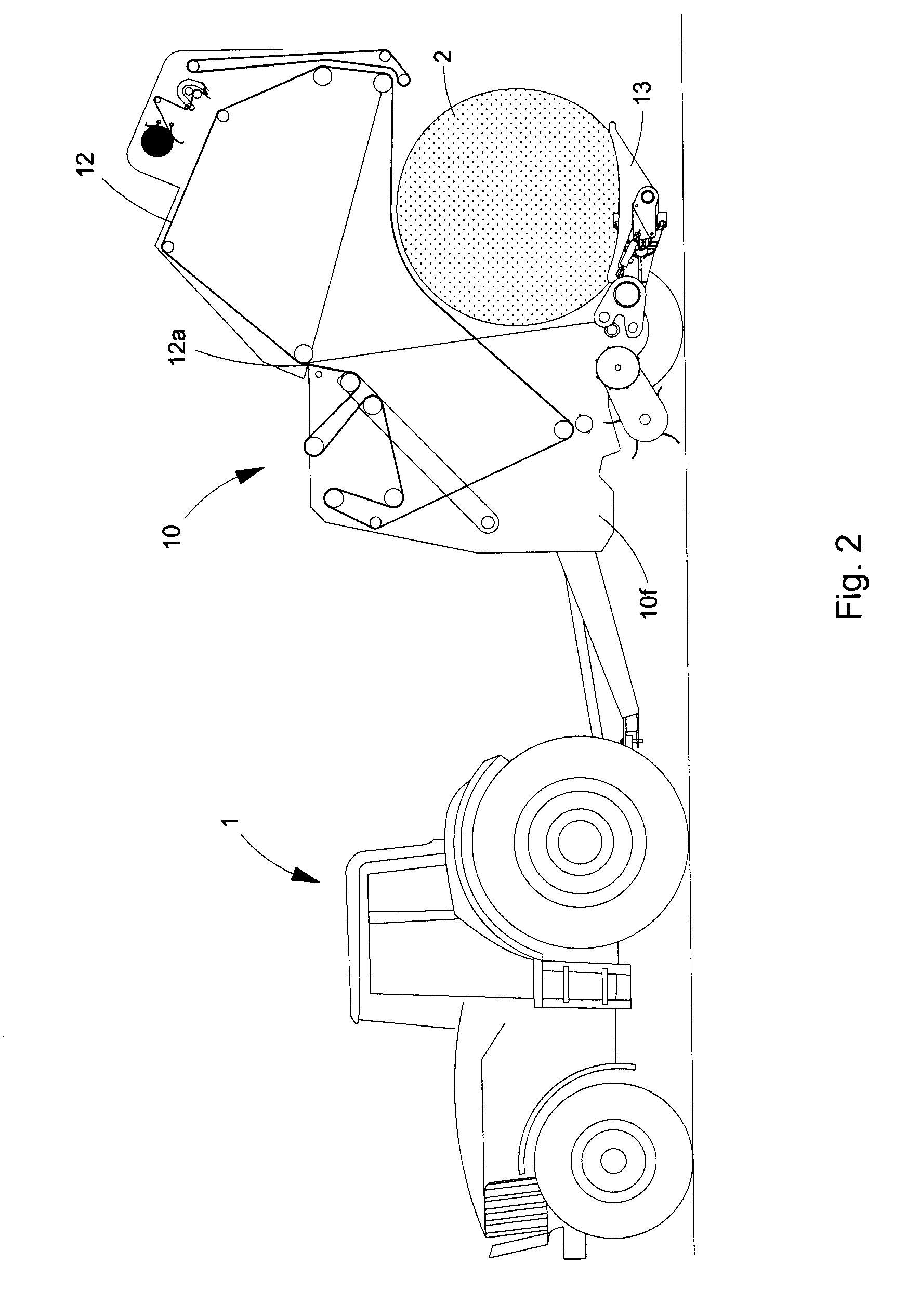Baler Attachment for Optionally Changing the Orientation of Bales Being Released From a Baler
a baler and optional technology, applied in the field of baler attachment, can solve the problems of inconvenient operation, inconvenient operation, and inefficient weaving throughout the field
- Summary
- Abstract
- Description
- Claims
- Application Information
AI Technical Summary
Benefits of technology
Problems solved by technology
Method used
Image
Examples
Embodiment Construction
[0061]Referring now to the drawings, wherein like reference numerals indicate identical or similar parts throughout the several views, FIG. 1 shows a baler 10 being towed by a tractor 1, in the process of making a bale 2, the baler 10 having a bale turning apparatus 11 attached thereto.
[0062]After the bale 2 has been completed, the rear gate 12 is pivoted up about horizontal axis 12a as shown in FIG. 2, allowing the bale to move rearwardly onto a cradle 13 which is part of turning device 11 of the present invention.
[0063]FIGS. 3-5 show sequentially the next few steps of how the present invention operates in two of its most useful modes, FIG. 3 showing the FIG. 2 position with the bale 2 resting on cradle 13. Then, the bale turning apparatus 11 pivots the cradle 13 and bale 2 ninety degrees (90°) along vertical axis 13v to a position to one side of the baler 12 as shown looking from the tractor 1 in FIG. 4 and looking from the rear of the baler in FIG. 5.
[0064]FIG. 6 is an alternate ...
PUM
 Login to View More
Login to View More Abstract
Description
Claims
Application Information
 Login to View More
Login to View More - R&D
- Intellectual Property
- Life Sciences
- Materials
- Tech Scout
- Unparalleled Data Quality
- Higher Quality Content
- 60% Fewer Hallucinations
Browse by: Latest US Patents, China's latest patents, Technical Efficacy Thesaurus, Application Domain, Technology Topic, Popular Technical Reports.
© 2025 PatSnap. All rights reserved.Legal|Privacy policy|Modern Slavery Act Transparency Statement|Sitemap|About US| Contact US: help@patsnap.com



